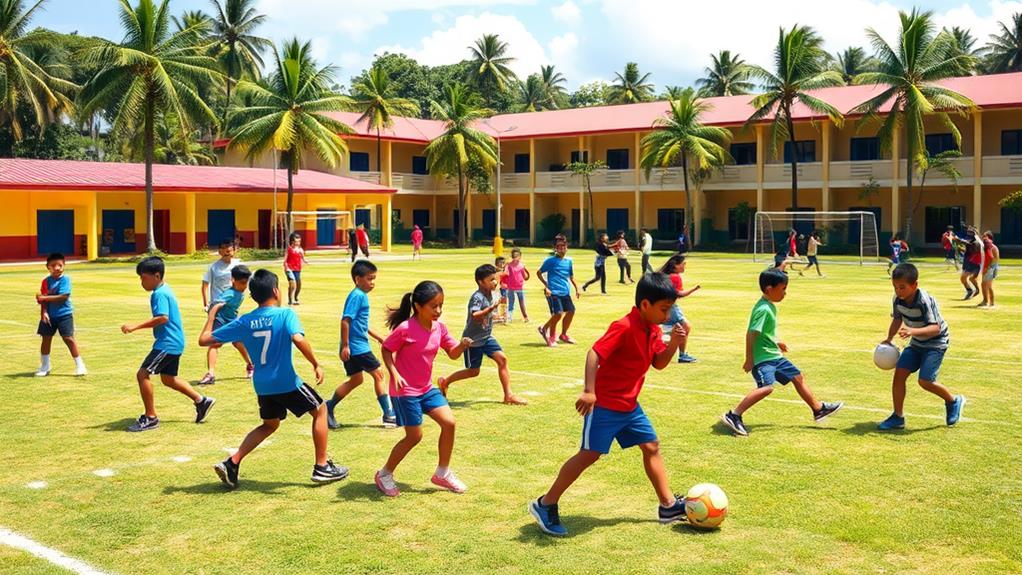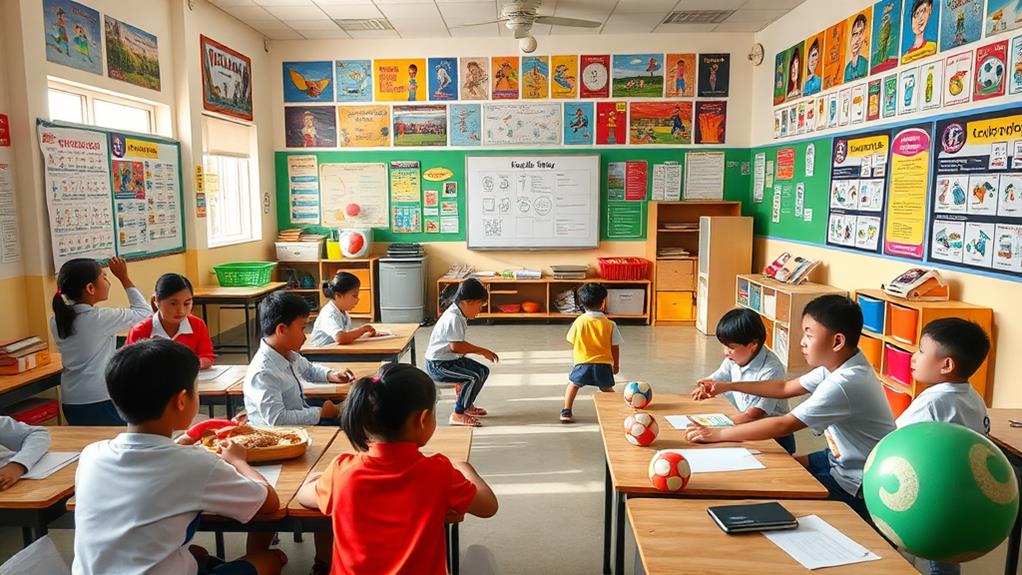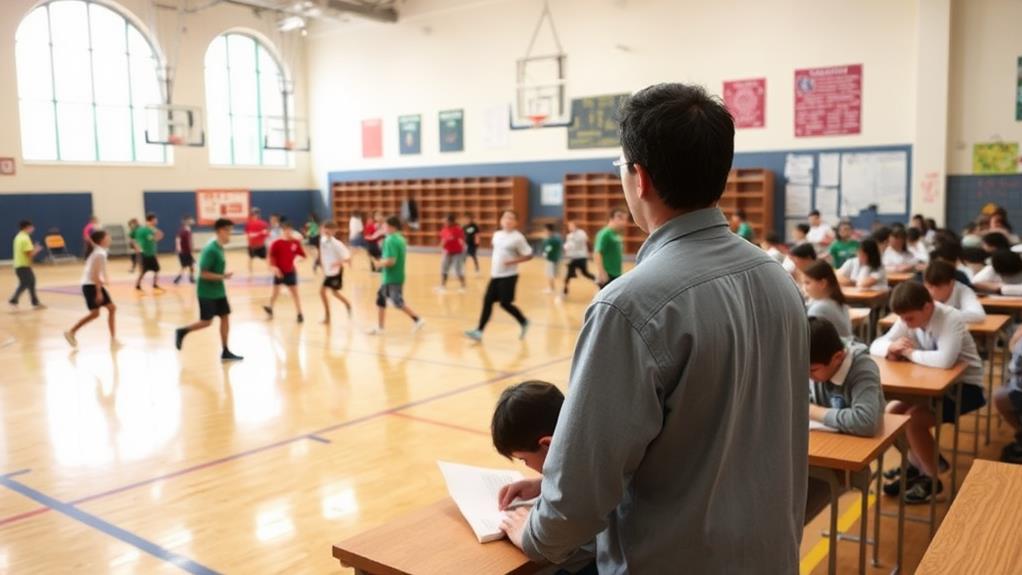Combining sports with education is crucial in the Philippines for developing well-rounded individuals. Engaging in physical activities has been proven to boost mental health, enhance concentration, and even improve academic performance. For instance, a study found that students who participated in sports had higher attendance rates and better grades compared to those who didn't.
Unfortunately, most Filipino adolescents do not meet the recommended daily activity levels. According to the World Health Organization, only 15.4% of adolescents in the Philippines engage in at least 60 minutes of moderate to vigorous physical activity per day.
Government initiatives and schools are working to address this issue. The Philippine government has implemented programs to integrate effective physical education into schools, while many schools offer a range of sports activities to encourage student participation.
However, challenges persist. Insufficient facilities and limited data hinder the progress of these initiatives. For example, many public schools lack adequate sports facilities, making it difficult to implement comprehensive physical education programs.
Investing in infrastructure and promoting collaboration are key to addressing these challenges. By providing better facilities and encouraging partnerships between schools, governments, and private organizations, we can inspire healthier lifestyles and better academic outcomes for Filipino youth.
Importance of Sports in Education

Sports are essential in education as they shape well-rounded individuals. Engaging in sports promotes physical activity, enhances mental well-being, and is vital for adolescent development. This importance is recognized by the Schools Physical Education and Sports Development Act of 1969, which emphasizes incorporating sports into educational programs to ensure students' overall growth.
Participating in sports improves academic performance. Research shows that students who engage in sports tend to have better concentration and higher grades.
However, the 2022 Philippine Report Card on Physical Activity reveals a concerning fact: only 15.4% of adolescents meet recommended activity levels. This highlights the need for comprehensive sports programs in Philippine schools to fill this significant gap.
Current Physical Activity Status
Physical Activity Status Among Filipino Youth is Alarming
The 2022 Philippine Report Card on Physical Activity gave an overall grade of F for physical activity levels among children and adolescents, indicating a critical need for improvement.
Low Physical Activity Levels
Only 15.4% of adolescents meet the recommended 60 minutes of moderate-to-vigorous physical activity daily. This is a significant concern, as regular physical activity is essential for a healthy lifestyle.
Inadequate Active Transportation
The report assigned a grade of D for active transportation, with just 40% of adolescents in Cebu walking to school and less than 1% biking. This highlights the need to promote alternative modes of transportation that encourage physical activity.
Excessive Sedentary Behavior
48% of adolescents watch TV for two or more hours daily, earning a grade of B for sedentary behavior. Reducing screen time is crucial to fostering a healthier lifestyle.
Insufficient Data on Organized Sports
There is insufficient data on organized sports and other physical activities, creating gaps in understanding youth behaviors. This lack of data hinders the development of effective strategies to promote physical activity among Filipino youth.
Addressing the Challenges
It is essential to address these challenges to foster a well-rounded education.
Overview of Educational Programs

Physical Education in the Philippine Educational System
The Philippine educational system has made significant efforts to integrate sports and fitness into the curriculum, recognizing the crucial role of physical education in youth development.
Republic Act No. 5708 encourages schools to focus on athletic development, ensuring students engage in various sports activities.
Department of Education's Sports Programs
The Department of Education oversees educational programs designed to develop skills in a range of sports, including:
- Aquatics: Swimming and lifesaving
- Athletics: Track and field skills
- Martial Arts: Self-defense techniques
These programs combine theoretical knowledge with practical training, preparing students for competitive environments.
Supporting Infrastructure and Resources
Adequate training facilities and resources are provided to promote sustained engagement in physical activities.
Financial provisions from Republic Act No. 5708 ensure ongoing sports development, enabling students to thrive in a well-rounded educational experience.
Government Initiatives and Policies
Government Support for Sports in Education
The Philippine government has implemented various initiatives and policies to promote physical activity among youth through sports integration in education.
The Schools Physical Education and Sports Development Act (Republic Act No. 5708) mandates the Department of Education to develop physical education programs in schools, ensuring effective planning, adequate facilities, and sustained financing.
National Policies Promoting Active Lifestyles
The 2022 Philippine Report Card on Physical Activity identified ten national policies that support active lifestyles among children, earning a grade of B for government initiatives.
These policies focus on:
Financial Sustainability: Financial provisions ensure that unexpended balances support ongoing sports development.
Long-term Impact: A focus on sustainability ensures long-term effects on youth physical activity.
Accountability: There's a call for stronger implementation and accountability mechanisms to ensure policy effectiveness.
Effective Program Translation: The need for better translation of policies into effective programs is recognized.
How Does the Palarong Pambansa Contribute to the Development of Well-Rounded Individuals in the Philippines?
The Palarong Pambansa is an avenue where young filipino athletes showcase their skills and sportsmanship. This annual event promotes physical fitness, camaraderie, and teamwork among participants. Through sports, the Palarong Pambansa contributes to the holistic development of well-rounded individuals in the Philippines, nurturing both their athletic and personal growth.
Challenges in Implementation

Challenges in Implementing Sports and Physical Education Initiatives in the Philippines
The Philippines faces significant obstacles in implementing effective sports and physical education initiatives. 84.5% of adolescents aren't sufficiently active, with only 15.4% meeting the recommended 60 minutes of physical activity daily, according to the 2022 Philippine Report Card on Physical Activity. This highlights the urgent need for improved programs to engage youth in physical activity.
Lack of data on key indicators, such as Organized Sport and Active Play, hinders efforts to understand and address factors influencing physical activity levels.
Although government policies received a grade of B, their impact is often diminished by ineffective implementation and lack of accountability.
The absence of collaboration among various sectors and inadequate national surveillance mechanisms further complicate the landscape. These challenges hinder effective sports development and meaningful physical education.
To overcome these hurdles, it's essential to foster partnerships, enhance data collection, and ensure policies translate into actions, paving the way for a healthier, more active generation.
Future Directions for Improvement
To create a more active and engaged youth population in the Philippines, strengthening government policies is crucial to support active lifestyles among adolescents. These policies must be effectively implemented and monitored to ensure their success.
Enhanced collaboration among government bodies, schools, and community organizations is necessary to create comprehensive programs that increase opportunities for physical activity. For instance, schools can partner with local sports clubs to provide after-school sports programs, while community organizations can offer free fitness classes in public spaces.
Establishing national surveillance mechanisms is vital for consistent data collection and monitoring of youth physical activity trends. This data can inform necessary policy adjustments, such as identifying areas with low physical activity rates and allocating resources to implement programs that promote physical activity.
Addressing barriers like limited access to organized sports and active transportation is essential to make it easier for young people to engage in physical activity. For example, the government can invest in building bike lanes and pedestrian-friendly roads to encourage active transportation, while schools can offer sports programs that cater to different skill levels and abilities.
Questions and Answers
Why Is Sports Important in the Philippines?
Sports Foster a Culture of Physical Fitness and Health
In the Philippines, sports play a vital role in promoting physical fitness and health benefits.
Regular physical activity helps reduce the risk of chronic diseases, such as heart disease and diabetes. By engaging in sports, individuals develop discipline skills, which translate to other areas of life, including academics and personal relationships.
Sports Promote Youth Development and National Pride
Participating in sports enhances youth development by building character, teaching valuable life skills, and providing opportunities for socialization.
The Philippines' athletic achievements, such as winning medals in international competitions, inspire national pride and unity. This pride motivates the country to continue investing in sports programs, which ultimately benefits the nation as a whole.
Sports Strengthen Community Bonds
Community engagement in physical activities strengthens social bonds and fosters a sense of community.
Local sports events and programs bring people together, promoting social integration and a healthier, more united society. By embracing sports, the Philippines can build stronger, more cohesive communities that benefit everyone.
What Are the Specific Sports Developed in the Philippines?
Traditional Sports
The Philippines has a rich heritage of traditional sports that continue to thrive. Arnis, a form of martial arts, is the national sport, emphasizing hand-to-hand combat and stick fighting.
Sipa, a game similar to sepak takraw, is another traditional sport that involves hitting a ball with the feet.
Modern Sports
Modern sports have also gained popularity in the Philippines. Basketball is a highly popular sport, with a professional league and a strong following.
Volleyball is another favorite, with both indoor and beach variations being played.
Football, although not as popular as basketball, has a growing fan base and a professional league.
Martial Arts and Combat Sports
Martial arts and combat sports are also prominent in the Philippines. Judo and Taekwondo are Olympic sports that have produced Filipino medalists.
Boxing is another popular combat sport, with world-renowned boxers like Manny Pacquiao.
Emerging Sports
New and emerging sports are also gaining traction in the Philippines. Esports, or competitive video gaming, has a growing following and has been included in several international competitions.
Obstacle course racing and trail running are also becoming popular, reflecting the nation's growing interest in outdoor activities and sports tourism.
What Is the Purpose of Physical Education in the Philippines?
The purpose of physical education in the Philippines is to foster holistic development through curriculum integration. This integration enables students to develop essential skills, values, and attitudes that benefit their overall well-being.
Physical education emphasizes skill development, teamwork, and character building, which enhances social interaction and youth engagement. By participating in physical activities, students experience health benefits that contribute to lifelong fitness, ultimately improving their academic performance.
Additionally, physical education highlights the cultural significance of sports, ensuring students appreciate both the physical and mental aspects of well-being, setting the foundation for a healthier lifestyle.
How Did the Foundation of Physical Education and Sports in the Philippines Start?
The Philippine government initiated physical education and sports programs to enhance youth development. In the early years, educational policies were shaped by cultural values that emphasized community engagement and collective responsibility.
The first curriculum developments in physical education were influenced by American and Asian models, which introduced new sports and games to the country.
Sports organizations played a crucial role in promoting participation and development. The Philippine Amateur Athletic Federation (PAAF), established in 1911, was one of the first organizations to oversee and govern sports in the country.
The PAAF organized national competitions, trained athletes, and developed coaches, which helped to raise the profile of sports in the Philippines.
Despite funding challenges and limited resources, the Philippines continued to participate in international competitions, such as the Southeast Asian Games and the Asian Games.
International competitions motivated students to engage in physical activities and develop a healthy lifestyle, which benefited both individuals and society as a whole.